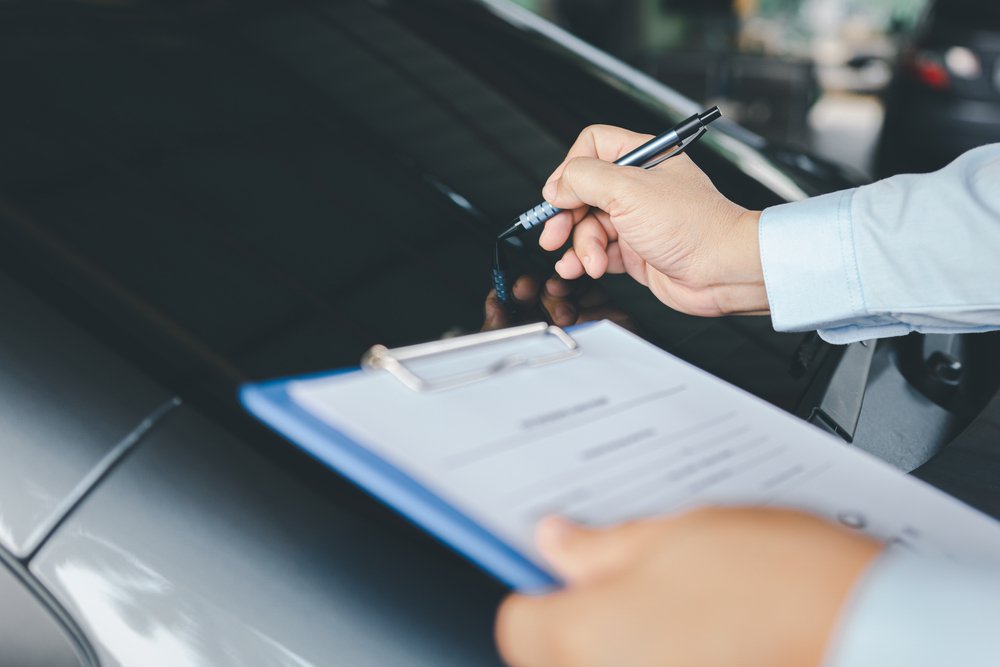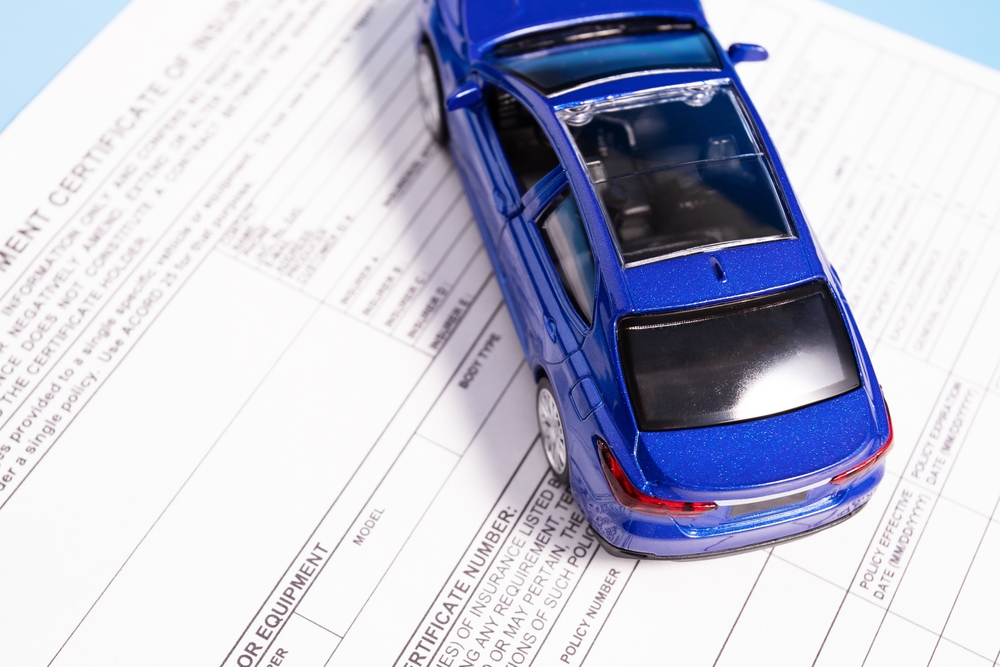Legal auto insurance requirements are in place in most states, and most drivers adhere to at least the required minimum coverage. These requirements help protect drivers should the unexpected occur.
Many other drivers even elect to purchase more than the required types or amounts to protect themselves further. However, what happens if insurance coverage runs out does not fully cover a driver's damages?
It's a problematic and surprisingly frequent occurrence that requires the skill of an experienced Sebastian car accident attorney.
It is imperative to understand what insurance coverage might be available to you and how it works in the event of an accident. A seasoned car accident attorney can research and investigate what types of insurance coverage policies you can file a claim under to receive compensation for your damages.
A car accident lawyer can provide more options than you realize, especially if multiple parties contributed to your accident.
Schedule A Consultation Today!
Compensation After a Car Accident

Motor vehicle accidents happen out of nowhere, often leaving victims with multiple burdens to bear, including financial burdens. Between medical bills and lost income, an accident can put some injured individuals into a financial tailspin.
No matter how an accident impacts someone financially, they have the right to receive compensation for their damages.
The amount of compensation someone stands to receive depends on many factors, such as:
- The type and extent of their injuries
- The state and area they live in
- Who is liable for the accident
- The types and amounts of insurance coverage available
Damages are the financial expression of someone's losses, inconveniences, and other negative effects on their life directly because of the injuries. Typically, there are two categories of damages: economic (special) and non-economic (general).
Economic Damages
Economic damages include all the victim's financial impacts of a car accident.
These include but aren't limited to:
- Lost income
- Medical bills and expenses
- Property damage
Calculating and proving these damages is simpler since there is concrete evidence of them, such as a medical bill, car repair receipt, and income loss statement.
Depending on your injuries, some claims may involve future lost income and medical bills. Having a well-versed car accident lawyer by your side is imperative if you suffer a catastrophic injury.
They have resources and experts at their fingertips who can help determine the value of your future medical care and how much you will lose in earnings by not working for an extended period or never returning to work.
Non-Economic Damages
On the other hand, non-economic damages are more challenging to prove because they are subjective. There is no bill or receipt to prove their existence or value.
Non-economic damages include things like:
- Pain and suffering
- Loss of enjoyment of life
- Loss of consortium
- Mental anguish
- Humiliation
- Loss of a limb or bodily function
Bodily Injury Car Accident Coverage
Nearly every state has insurance laws requiring drivers to carry liability coverage. When you suffer an injury in a motor vehicle accident, you have the right to file an insurance claim under the at-fault driver's bodily injury (BI) liability coverage.
This coverage should pay for the injured individual's:
- Medical expenses: Emergency care, hospital bills, doctor appointments, prescriptions, physical therapy, rehabilitation, and other related costs
- Lost income: If a claimant can't work due to their injuries or attending medical appointments
- Replacement services: General and household tasks the injured person must hire out because they can't complete the tasks themselves, such as grocery shopping, housekeeping, cooking, childcare, and pet care
- Pain and suffering: Includes emotional distress, physical pain, loss of a limb or bodily function, humiliation, loss of enjoyment of life, loss of consortium, and more
On every policy, two coverage limits exist for bodily injury liability:
- Per-person limit: The amount of financial compensation that each person injured in a single accident can receive
- Per-accident limit: The total maximum amount of compensation if more than one person suffers an injury
For example, if a driver injures three different parties in a single accident, they will be subject to the per-person and per-accident limits. If the applicable policy has a $50,000 per person limit but a $100,000 per accident limit, the three injured parties must determine how to divide up $100,000 based on the severity of their injuries or damages.
This can become a tricky situation and is one excellent reason for securing competent legal counsel if you suffered an injury in a multiple-party accident.
Suppose the injured parties can't agree on a fair division of the available limits. In that case, the insurance company may file an "interpleader action" to request a judge decide how to divide the $100,000 per accident limit.
Other Types of Potentially Required Auto Insurance Coverages

Depending on the state, motorists may be required to carry other types of insurance, such as:
- Personal Injury Protection (PIP): Required coverage in no-fault insurance states and optional additional coverage in tort states. PIP covers the driver and their passenger's injury-related costs, like medical expenses, lost income, and, in some situations, replacement services. However, PIP won't pay anything for pain and suffering.
- Medical Payments (MedPay): An optional coverage in most states similar to PIP. It covers injuries to drivers and their passengers, no matter who caused the crash. The downside is that MedPay only pays for essential medical care and commonly has low limits. It doesn't cover lost income or replacement services.
- Uninsured Motorist Coverage: Provides reimbursement for your losses caused by an uninsured driver. Most states mandate that auto policies include uninsured motorist coverage in case a non-insured motorist hits an insured one.
- Underinsured Motorist Coverage: This coverage is an optional add-on to auto insurance policies in most states. An underinsured motorist has an auto insurance policy, but their coverage isn't enough to cover your accident expenses. Underinsured motorist coverage kicks in when you have accident-related injury expenses that surpass the at-fault driver's liability policy limits.
Insurance Coverage for Property Damage
Bodily injury liability coverage is imperative, but most auto insurance policies also include some level of property damage liability coverage.
It provides compensation for damage to your vehicle and personal property that the accident damaged, such as eyeglasses, prescription sunglasses, laptops, jewelry, clothing, or supplies/groceries you had in your car. A property damage claim might even recover vehicle towing expenses.
Your Own Collision Coverage
Sometimes, motorists use their collision insurance coverage for car repairs after a crash caused by another driver.
They file the claim on their own insurance policy, leaving their car insurance company to collect the cost of their deductible and the repairs from the at-fault driver's insurance company. This process is known as subrogation and can sometimes take a while.
Collision coverage will pay for insurance adjuster-approved auto repairs, less your elected policy's deductible, no matter how the accident occurred.
When the crash isn't their policyholder's fault, the insurance company will seek subrogation from the at-fault driver's insurance company to reimburse themselves for money they spent on your behalf.
Cooperating with your insurer as they work through subrogation is in your best interest and a contractual obligation. For instance, don't agree to anything or sign waivers that release the other driver from responsibility.
You also shouldn't sign or agree to anything without first checking with your car accident attorney. Usually, subrogation happens toward the end of the insurance claims process. If successful, the insurance company must refund your deductible amount to you.
Your Options When Insurance Coverage Runs Out
Several circumstances can arise, leaving you without enough insurance coverage to pay for your bills and other damages after an accident.
This is common if you:
- Are in a hit-and-run accident where the driver is unknown
- Are hit by an uninsured driver
- Are hit by a driver with only the minimum or otherwise minimal amounts of insurance coverage
- Sustain catastrophic injuries and many high-value damages
The stakes are high in these situations, and you stand to lose a lot of money. Always contact a knowledgeable car accident attorney who can ensure you have exhausted all your insurance options.
If the other driver has no more available insurance coverage, you might rely on your own policy if you have collision or underinsured/uninsured motorist coverage. But what options do you have left if you don't have these coverages or those are also exhausted?
File a Lawsuit Against the At-Fault Driver
The at-fault driver's insurance company is responsible for paying you because that's how insurance works. Instead of assuming total financial responsibility for an accident, drivers pay their insurance companies to assume the responsibility for them up to certain limits.
Even still, the at-fault driver is ultimately the party responsible for the accident and your injuries. As such, if the amount of your damages exceeds policy limits, you might be entitled to file a lawsuit against the at-fault driver to recover the excess funds you deserve.
However, keep in mind that not every driver has large sums of cash available to pay out on civil car accident judgments. In other words, the responsible individual's financial situation factors into whether or not a lawsuit is worth pursuing against them.
When you work with a well-versed attorney, they can gather crucial information to help you make this decision.
If you were involved in a hit-and-run accident, your attorney can attempt to work with local law enforcement to track down the driver. Unfortunately, many hit-and-run drivers lack insurance coverage, which makes it harder to collect damages from them as they are less likely to have assets to go after.
Even still, your attorney can file a lawsuit directly against them. If necessary, they can pursue various methods of receiving funds if the jury awards you compensation, such as garnishing their wages, putting liens on their property, or levying their bank accounts.
Filing a Lawsuit Against Multiple Parties

Sometimes, multiple parties are responsible for your accident. In this case, you might recover compensation under multiple auto insurance policies.
For example, suppose the driver of a package delivery service vehicle caused your injuries in an accident during their job duties. In that case, you can file a lawsuit against the package delivery service and the individual driver.
A car accident attorney can review the facts in your case to find out if you can seek compensation from more than one party in your accident.
Other parties who can be responsible, in addition to a driver's employer, include:
- Government municipalities
- Vehicle manufacturers
- Vehicle parts manufacturers
- Additional drivers who contributed to the accident
Filing a Bad Faith Lawsuit Against the Insurance Carrier
Most state laws require insurance carriers to settle within the policy limits if they can do so. Still, insurance companies sometimes refuse to pay a claim if the injured party's claim exceeds policy limits.
If the insurer doesn't attempt to settle, you have the right to file a lawsuit against them for bad faith. If your claim goes to court, a jury can award you more than the policy limits. In that case, the insurance company has to pay you whatever amount the jury decides is appropriate under your circumstances.
Does the Value of Your Damages Exceed Insurance Limits?
Most people won't know the answer to this question. The reality is that whether it does or doesn't exceed the insurance limits, you need a qualified car accident lawyer on your side to maximize your compensation after an accident.
So even if your damages don't exceed insurance limits, you aren't guaranteed to receive the full value of your damages. No matter the circumstances or the amounts of insurance coverage involved, have an experienced car accident attorney who will work tirelessly to get you the compensation you deserve for your damages.

Consult a Car Accident Lawyer Right Away
Many insurance issues can arise in car accident claims, even if your claim seems fairly straightforward at first. You want a legal professional representing you to address any hiccups and over any obstacles, such as policy limits. Consult a car accident attorney for free as soon as possible if you suffer injuries.
